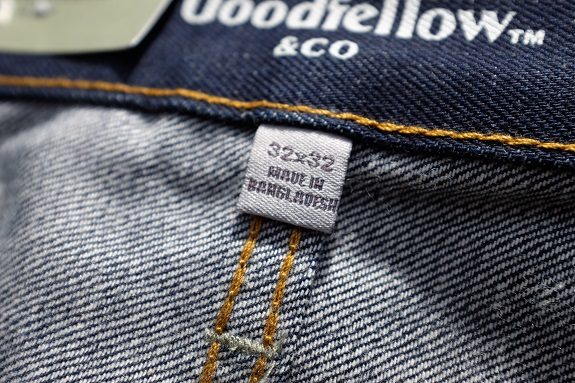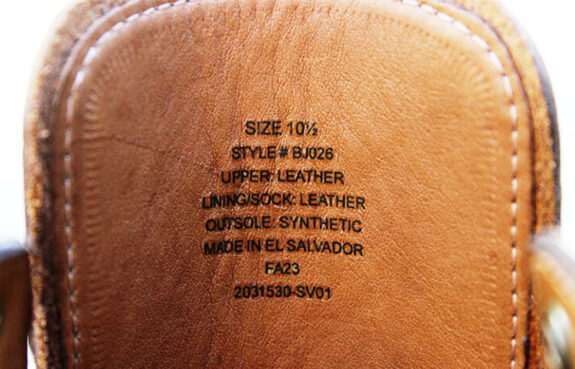4/10/25 Update: After a volatile week, the financial markets (bonds especially) forced a partial, temporary walk back of the “Liberation Day” tariffs imposed by The President on April 2nd. According to the Wall Street Journal, The President “privately acknowledged that his trade policy could trigger a recession but said he wanted to be sure it didn’t cause a depression.” As the temporary rollback is only partial, and as he also raised tariffs on China to 145%, this episode is anything but over.
4/21/25 Update: Via the WSJ: “Administration officials have previously argued that consumers wouldn’t bear the cost of tariff hikes because the dollar would strengthen. A weaker dollar makes it more likely that U.S. importers and retailers will have to pass along price hikes.” (TL;DR/Paywalled synopsis: Crazy comes with costs. Always has.)
5/12/25 Update: After negotiations in Switzerland, for the next 90 days the U.S. will reduce total tariffs on Chinese imports from 145% to 30% (10% reciprocal, 20% tied to fentanyl crisis), whereas China will reduce tariffs on US goods to 10%. The stock market soared on the news, yet it’s worth acknowledging that the pre-“Liberation Day” tariff on Chinese imports was ~20%, and the original Liberation Day reciprocal tariffs on Chinese imports were set at 34%. Also, the termination of the de minimis exemption for made in China goods remains.
Feelings
A handful of people at the top of the U.S. Executive branch seem to feel very strongly in the following ways:
- Reshoring 20th-century-style manufacturing (mostly low tech production of inexpensive hard goods) would be cheap and easy.
- Having a trade deficit with a country (see below) is an undeniable indicator they’re ripping us off.
- The rest of the world has no agency. “We’re the USA. So whattya gonna do about it?”
Those are some strong feelings. They are in those feelings. Deeply. Madly. “Bigly.”
Facts
- It takes a while to build factories and US unemployment is relatively low. Anti-immigration policies also reduce the number of low*-skilled workers (*you try roofing a house in 100 degree summer heat and see how low-skill that feels).
- A trade deficit is not an infallible indicator that someone is treating you unfairly. Bangladesh for example (new tariff rate of 37%) is not full of rich rip-off artists cleaning America’s clock. We have a steep trade deficit with them because they don’t purchase enough of our airplanes and nuclear reactors to offset the amount of t-shirts we buy from them. We once made a ton of t-shirts. We still make some t-shirts. But now we make less t-shirts, and more nuclear reactors.
- The rest of the world will respond (unless the financial markets do it for them first). They don’t have a choice. If they’re frightened into negotiating, they’ll validate this nonsense formula which makes as much real-world sense as 1 + teapot = Montana. Do that, and they’ll set a permission structure which will allow them to be manipulated for any deranged excuse in the future.
“Facts don’t care about your feelings” used to (quite literally) be a slogan of those who are currently in power.

Now before anyone out there grabs a pitchfork and (tiki) torch, just for context… the author of this post is as privileged as he is today in large part because of the United States manufacturing industry.
Why? Because his Grandpa Chuck ran away from home when he was 16 and got a job in a General Motors plant. And in that plant he worked hard and he worked often and he worked his way up for the next 45 years. That progress and stability allowed his children as well as his children’s children the opportunity to go to reasonably priced public colleges. Two of his three sons went into the service sector (one chemical sales, the other business administration) whereas the third joined the military, and later entered the very same GM plant his father was at, working on higher-end electrical manufacturing equipment.
Multi-generational economic stability matters. And traditionally, the source of that stability has been manufacturing.
But that plant Grandpa Chuck worked at is now closed.
It was shuttered in the wake of the 2008 financial crisis, rising gas prices, and the (then) consumer move away from gas-guzzling SUVs, which was what they made there.
Yes, the U.S. needs more goods-producing Grandpa Chucks, and less idiot fashion blogger Joes. By percentages, right now our labor statistics look about like this:
- 12% Manufacturing/Goods Producing (“Grandpa Chucks”)
- 80% Service Sector
- ~8% Self-Employed, Agriculture, etc.

Yet, and this is important, the U.S. is also the #2 producer of goods in the world:
- China: $2 trillion per year
- U.S.: $1.8 trillion per year
- Japan: $1 trillion per year
- Germany: $700 billion per year
We still make stuff. A lot of stuff. But there has obviously been a disruptive reallocation of the labor force away from manufacturing and towards the service sector. But just how these tariffs are gonna shift those percentages back towards manufacturing in any meaningful way, without doing so much damage in the process to be counterproductive, seems… unclear.
Marc from IslandWatch with his viral video on how this math works. Or in fact, doesn’t.
The U.S. Rust Belt, South, and many other regions have experienced deep pain caused by globalized free trade and the off-shoring of manufacturing. We’re also still a gigantic manufacturing force, and we should protect AND grow that.
But highly punitive and nonsensical tariffs are both a short term and long term bad idea for precisely those who have already suffered the most. The people who buy mostly cheap, imported goods will feel this more than anyone. The current estimate of the average household consumer loss under these tariffs = $3800 per year. For context, 37% of Americans can’t afford an unexpected, emergency expense over $400, let alone almost four grand. Who do they think does their shopping at Dollar General and Wal Mart? (Sidenote: If you wanna raise revenue for incentivizing American Manufacturing, try making people pay the taxes they already owe. That’s half a trill right there. MAY 2025 UPDATE: Looks like tax revenues are in line with expectations this year, so far. But that was before the slashing IRS enforcement staff. Who knows what next year brings?)
What does this have to do with clothes?
Short term, the price of almost all consumer goods will rise as companies and brands pass on some if not all of the immediate costs to the consumer, and/or rack up additional costs while moving production to locations with less severe tariffs. Prediction: watch for more Made in Jordan, Made in Turkey, and Made in El Salvador clothing labels to start showing up, while Made in China, Made in Bangladesh, and Made in Vietnam labels start fading away. Also, quality control and overall consistency might go haywire. This happened during the latter stages of the pandemic when China shut down, and much of the world’s apparel production got scattered to the winds. It can take a bit for the new places to perfectly replicate the old stuff.

Long term, few if any will invest in building in the United States. It doesn’t make strategic sense, as we’re now seen as unpredictable and unstable. It certainly doesn’t make fiscal sense. The labor force is too expensive and too small to warrant building a significant amount of t-shirt or sneaker factories here. And even with the tariffs, it’s gotta be less expensive to move production to another less-tariffed country, which probably already has many of those facilities and the labor in place. Even if the US did have the labor, wouldn’t shifting towards low-cost-goods manufacturing move our industrial output, on average, down the “value chain?” Grandpa Chuck spending 45 years at the GM plant so his great-grand children could have the opportunity to make t-shirts doesn’t feel like a pitch many politicians could sell on the campaign trail.
Bottom line
There is immense dignity and honor in manufacturing and more physical/less office-y labor. Whether it’s making t-shirts, trucks, turnips, or toasters.
In many (read: most) ways the most secure, calm, and fulfilled I’ve ever felt was when I had a true lunch-pail (ok, mini-cooler) job, and it was so dirty I’d come home, sneeze, and grass and dirt would fly out of my nose (a hearty sweat-stained hat-tip to all the landscapers out there… which admittedly, yes, is a “service” sector job).
But these tariffs are transparently nonsense, strategically stupid, and dangerously backwards looking. We can’t go back. Certainly not like this. Because if we do, the world is gonna move forward without us whether we like it or not. Nobody has a time machine with a flux capacitor in it, ready to rocket us all back to 1955 when the U.S was cranking out transistor radios, wallpaper, and light bulbs. And you can bet if they did, they’d put that flux capacitor in a BYD instead of a Tesla.
Because it’s hard to get up to 88 mph with the body panels flying off.

Note: Whether these tariffs stick or not, Dappered will continue to do our best to cover the best bang-for-the-buck men’s style which balances price, quality, and good looks. Whether it’s made here in the states, or overseas, as we have. But prepare yourselves for price inflation no matter what happens with tariffs. Because even if the administration rolls these things back, words matter. Now that nations, brands, and retailers everywhere have had the crap (and money) scared out of them, you’d have to think they’re gonna batten down the hatches and try to assemble reserves for any future shocks. I mean, see Nike and lululemon. They were more or less told to move production to Vietnam. How’s that working for them?
(Very top photo image: Jason Mavrommatis on Unsplash)
